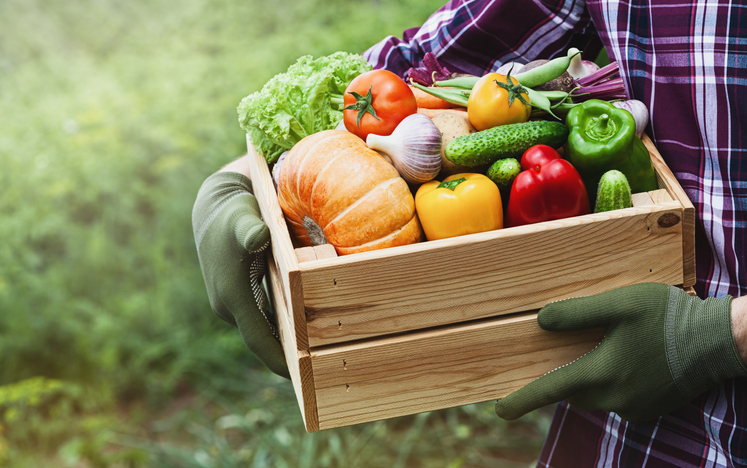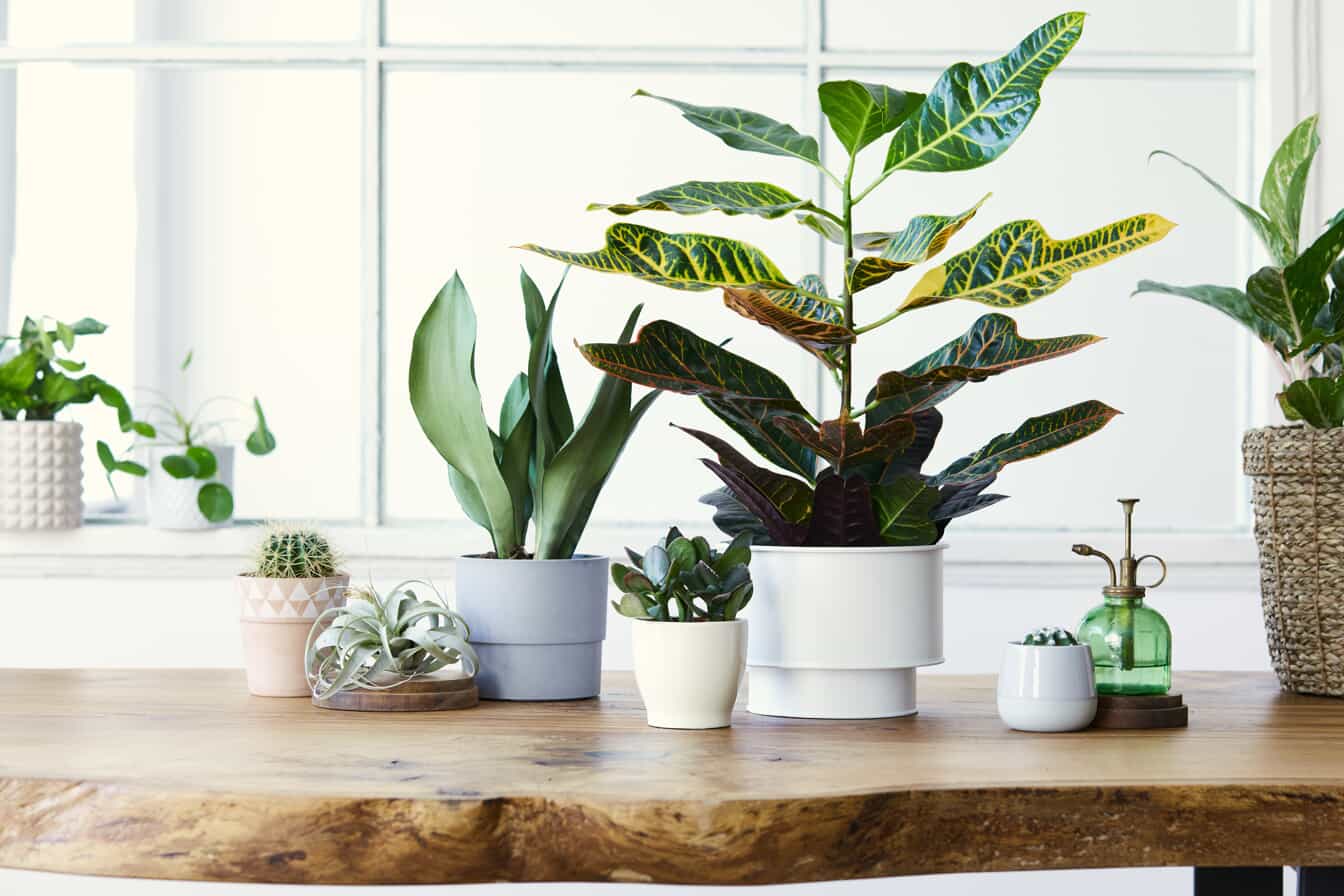8 Delicious Fruits, Veggies, and Herbs to Plant in Spring
Are you looking for spring vegetables, fruits, and herbs to plant now? If you want to experience juicy, sweet, and tangy spring crops, now is definitely the time to tap into that green thumb.
Contrary to popular belief, growing healthy fruits and veggies doesn’t take years of expertise. All you genuinely need is a little patience, timing, and enough space for a thriving garden. Our team at Merry Maids® is ready to take on your home’s interior while you handle the exterior and grow fresh spring crops to enjoy all year long.
Check out eight fruits, vegetables, and herbs to plant in spring.
Some Considerations Before You Dive In
Before you pull out your trowel and start digging up your backyard, there are a few things you should consider first.
- Find your growing zone – This information will give you the average dates of the first and last frost so that you can estimate when to plant your produce. We recommend visiting your local County Extension Office’s website for details about your specific area. You can also go to the USDA Plant Hardiness Zone Map for visuals.
- Choose your seeds – Think about the kinds of fruits, veggies, and herbs you use regularly. Even if you’re not planning to grow an expansive garden, having a window box with simple herbs can help you save money at the grocery store later.
- Locate the sunniest part of your yard – Sunlight is vitally essential when you’re considering veggies, fruits, and herbs to plant in spring. Most crops require 6-8 hours of sun to thrive and survive. Pick a day and check in every couple of hours to see where the sun is hitting consistently. These will be the areas best suited for your garden.
8 Spring Crops to Grow Today
1. Cauliflower
Did you know cauliflower is a cruciferous veggie that may have cancer-fighting properties? Yes, it does have a very distinctive smell when cooked, but cauliflower is nutrient- and vitamin-rich.
Pro tip: If you’re somewhat of a beginner, you can transplant a cauliflower instead of starting it as a seedling. As a cool-weather veggie, it prefers temperatures in the 60s, so cauliflower seeds should be planted 2-4 weeks before the last frost.
2. Tomatoes
Tomatoes aren’t just your run-of-the-mill fruit (or vegetable, if you’re in that camp). Because tomatoes are high in lycopene, they’ve been known to help fight severe chronic conditions like lung, stomach, and prostate cancer. These sun worshipers sometimes get a bad wrap as being difficult to grow. The reality is tomatoes are just a bit more particular about sun, soil, and water. This is why it’s a good idea to start your seedling indoors 6-8 weeks before the last spring frost and transplant it once it has a more vital root system, so you can manage the amount of sun and water it gets to produce a juicy tomato.
Pro tip: While tomatoes love the sun, they can get too much of it. To avoid “sun scalding” your tomatoes, ensure the spot you’re planting gets no more than 8-10 hours of direct sunlight daily. Additionally, ensure your soil is at least 55 degrees Fahrenheit.
3. Eggplant
Can you think of a more stunning, glossy vegetable out there? Eggplants take about 2-3 months to grow before they’re ready for harvest. This spring/summer crop doesn’t mind having warm roots, so at least 6 hours of sun is optimal.
Pro tip: Growing eggplant is extremely easy… if you don’t account for eggplant flea beetles. To kill these pesky little creatures, you’ll need Diatomaceous Earth, an organic powder found at most home improvement stores. Sprinkle the recommended amount (per the instructions) of powder on the eggplant to successfully eliminate flea beetles.
4. Carrots
Ever seen a purple carrot? No? Well, whatever color carrot you decide to grow will still require some tender love and care to prosper. One of the best things about carrots is that they can be picked as baby carrots or left to mature. Carrots can be slow to germinate, so patience is key with these vegetables. You’ll want to plant carrots 1/4 inch deep and ensure topsoil is damp. Remember to lightly firm the soil after seeding.
Pro tip: To avoid bitter-tasting carrots, ensure your planting season is anywhere between the last frost and late spring. Plant seeds an inch apart in rows one foot apart, and make sure they’re 8-10 inches deep in a compost-fertilizer mixture.
5. Parsley
Are you looking for herbs to plant this spring? Parsley is an herb that can be used to season food and as a garnishment to spice up drinks. Believe it or not, parsley is nutrient-rich and can be used for medicinal purposes.
When planting parsley, ensure seeds are 6-8 inches apart in well-drained soil and a partially shaded area.
Pro tip: Never cut more than a third of the stem when harvesting parsley if you want to continuously grow healthy parsley stems.
6. Mint
Mint is probably one of the easiest herbs to grow. In fact, some people mistake it for weeds because of how rapidly and vigorously it grows. You’ll get the best mint leaves by planting them after the last frost. Keep your soil consistently moist (not too damp). You’ll know it’s time to water again when the first inch of soil feels dry. Additionally, fresh mint doesn’t enjoy the sun as much as other crops on this list.
Pro tip: Because mint doesn’t need much assistance to grow, it can start to overrun your garden if you’re not careful. Plant mint in a small area away from other spring crops or in a pot by itself.
7. Honeydew
Sweet honeydew melons should be planted in late spring because they require warmer weather and a lot of sunlight to thrive. Remember to give this fruit enough space by planting seeds in rows 1/2 inch deep in moist soil. Soil containing compost or fertilizer will create the perfect growing environment for your melons.
Pro tip: Plant honeydew inside for 3-4 weeks to get a head start. Before planting in a garden, harden off your honeydew plant by putting it outside in a shaded spot for at least a week. This process will toughen up the cell structure and reduce transplant shock.
8. Raspberries
Raspberries are full of nutrients and perfect for early spring planting. These vibrantly colored berries are easy to grow and flourish in raised garden beds, as they’re prone to root rot. If you want your raspberries to flourish, it’s essential that you use manure or compost and plant in an area with proper drainage.
Pro tip: Plant raspberry bushes 3-4 feet apart and secure them with a post and wire system to ensure they grow straight and don’t impede other spring crops.
Let Merry Maids Help You Get Back to the Things You Love
If gardening is the thing that gets you excited every day, let our team at Merry Maids clean and disinfect inside while you work your gardening magic. Choose from various cleaning services, including specialty cleaning, move-in/move-out cleaning, housekeeping, deep cleaning, and more. Get back to whatever you love and take your mind off the state of your home by scheduling weekly or monthly cleanings today.
For your free cleaning estimate, find your nearest location or call Merry Maids to get started.













